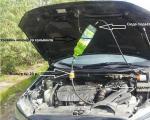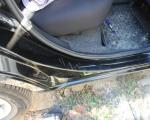Lubricant for wheel bearings - which is better? Selection Tips
A car has a huge number of moving parts. Some of them interact with each other. The frictional force that inevitably arises in this case must somehow be compensated. This is especially true for rotating parts. An excess of friction force leads to heating of the part, its thermal expansion and jamming. Bearings are designed to eliminate this phenomenon.
Hub bearings and lubricants
The element is designed to reduce the friction force, converting it into a lighter one - one of the critical components of the undercarriage. Wheel hubs also cannot do without these devices. Many factors depend on the ease of rotation of the element. These are vehicle stability, fuel consumption, acceleration and deceleration time. However, it is a very loaded mechanism. The bearing needs to be lubricated to make it spin freely. It additionally reduces the friction force in this node.
Application of lubricants
This component reduces friction or, in the absence of moving parts, ensures that the parts fit without being rigidly attached to each other. Lubrication provides easy sliding of surfaces relative to each other. This significantly extends the life of the part.
So, we need a lubricant for the hub bearings - which one is better? Its work is quite specific and is influenced by many factors, internal and external - a high rotational speed and temperature changes leave their mark on the operation of this unit. Such features make it impossible to use lubricants that have synthetics in their composition. These are vaseline and silicone materials, which are on sale in a wide range. Unfortunately, they stop working already at 50 degrees. 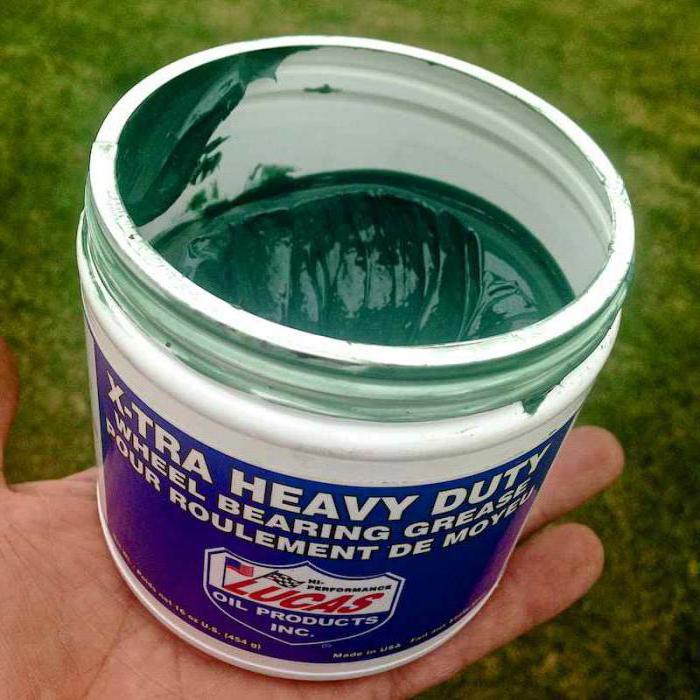 The next type of grease that is not recommended for use in wheel bearings is based on sodium and calcium. Such compounds significantly reduce friction, but do not resist corrosion at all. Rust in a bearing is always a bad thing. Another type of widespread composition is graphite-based. If we need a hub bearing grease, which one is best? Graphite composition belongs to the category of high-temperature. The lubricant contains a large number of abrasive elements, which catastrophically reduce the resource of rubbing parts. Such products are used for tight joints (for example, between individual pipes of the exhaust system) or on individual metal parts for rust protection. On average, when using graphite lubricants, the resource is reduced by three to four times compared to the recommended types of compounds.
The next type of grease that is not recommended for use in wheel bearings is based on sodium and calcium. Such compounds significantly reduce friction, but do not resist corrosion at all. Rust in a bearing is always a bad thing. Another type of widespread composition is graphite-based. If we need a hub bearing grease, which one is best? Graphite composition belongs to the category of high-temperature. The lubricant contains a large number of abrasive elements, which catastrophically reduce the resource of rubbing parts. Such products are used for tight joints (for example, between individual pipes of the exhaust system) or on individual metal parts for rust protection. On average, when using graphite lubricants, the resource is reduced by three to four times compared to the recommended types of compounds.  It is also not recommended to use products containing zinc and iron. To be more precise, it can be used, but not necessary - it is well suited for industrial use (on machine tools and other equipment).
It is also not recommended to use products containing zinc and iron. To be more precise, it can be used, but not necessary - it is well suited for industrial use (on machine tools and other equipment).
Modern developments provide the widest choice of lubricants. The use of various additives and additives significantly improves the initial qualities and physical properties of the compositions. So, if the question concerns the choice of a composition such as a lubricant for hub bearings, which one is better?
Such a connection is very effective for working in given conditions. This ensures an optimal balance between the quality of lubricating properties and the fight against corrosion. The resource of this lubricant is equivalent to 100 thousand kilometers. This is comparable to the resource of the wheel bearing itself. 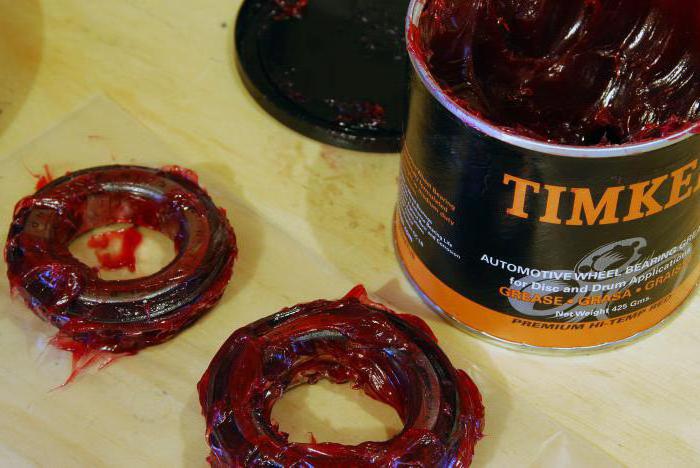 However, such a lubricant has its drawbacks. Firstly, it does not interact well with moisture, so bearings with such filling must be closed. The lubricant should not come into contact with air, and in case of depressurization, it must be completely replaced and all rubbing parts checked. Also, the composition is subject to contamination. Abrasive particles accelerate the wear of the lubricant itself and the bearing. The most common brand of domestic products is "FIOL" and "SHRUS-4".
However, such a lubricant has its drawbacks. Firstly, it does not interact well with moisture, so bearings with such filling must be closed. The lubricant should not come into contact with air, and in case of depressurization, it must be completely replaced and all rubbing parts checked. Also, the composition is subject to contamination. Abrasive particles accelerate the wear of the lubricant itself and the bearing. The most common brand of domestic products is "FIOL" and "SHRUS-4".
High temperature grease
It contains nickel and copper additives in powder form. Such lubricants (for example, MC1510) do not lose their stable characteristics at high temperatures, up to 350 degrees. They also have high oxidative stability. 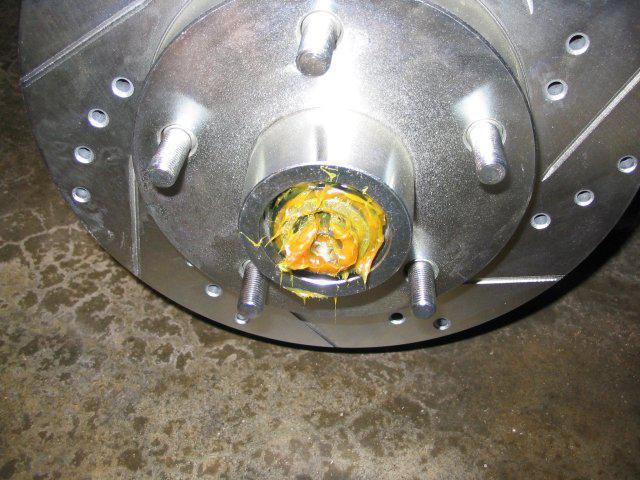 High temperature grease for is one of the best. Its operating range is from -40 to +180 degrees. The composition performs well during sudden braking, acceleration and temperature changes. The addition of special additives ensures high resistance to oxidation and corrosion.
High temperature grease for is one of the best. Its operating range is from -40 to +180 degrees. The composition performs well during sudden braking, acceleration and temperature changes. The addition of special additives ensures high resistance to oxidation and corrosion.
Greases containing lithium
These are materials containing lithium in organic acids. Such lubricants are universal and their scope is very wide. Outwardly, they can be distinguished by a light yellow tint. The service life of bearings with such a lubricant is also very high. The resource, subject to the operating conditions, approaches the service life of the bearing itself. Therefore, for wheel bearings - a good enough option. It is also worth noting the return of the composition to its characteristics after overheating. Foreign firms producing lithium grease are BP, Very Lube and Renolit. The domestic manufacturer has established itself with a single product - Litol-24. This product is already known to more than one generation of motorists.
Replacing the composition
Replacing the grease in the hub bearings is not such a difficult task. The car is reliably braked and after that the hub nut is loosened using a socket head and a long wrench. Next, the wheel is hung out and removed. The brake disc is also dismantled, and the hub is disconnected from. After that, the hub fastening nut is finally unscrewed. Using a hammer, the element is knocked off the axle shaft. 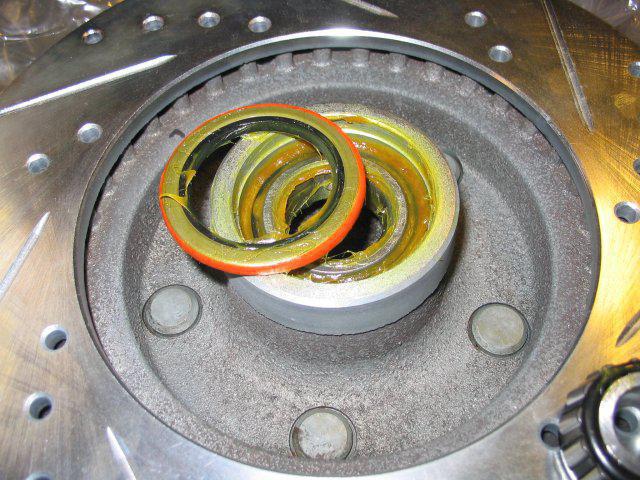 The bearing is pressed into the cage, which must be removed with a special puller or a strong flat screwdriver around the circumference of the ring. The latter can boil over. In this case, WD-40 or kerosene will help. Old grease is removed with kerosene or gasoline. They wash the entire bearing, race and seat in the hub, and then wipe everything dry. A clean rag should be used.
The bearing is pressed into the cage, which must be removed with a special puller or a strong flat screwdriver around the circumference of the ring. The latter can boil over. In this case, WD-40 or kerosene will help. Old grease is removed with kerosene or gasoline. They wash the entire bearing, race and seat in the hub, and then wipe everything dry. A clean rag should be used. 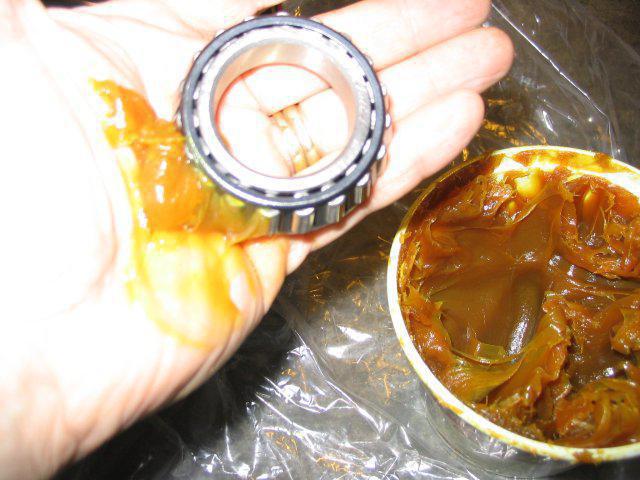 New grease is applied to the cage in an amount of about 30-40 g per bearing. Using a screwdriver or a wooden stick, it is evenly applied to the surface of the bearing. Next, the element is installed in the hub and centered by the clip. Installation is carried out using a suitable mandrel or clip from the old bearing. Further assembly is carried out in the reverse order. Lubrication of the rear hub on vehicles with drum brakes is carried out in the same way. Only here the removal of the bearing is carried out without dismantling the hub from the vehicle. Time goes a little faster.
New grease is applied to the cage in an amount of about 30-40 g per bearing. Using a screwdriver or a wooden stick, it is evenly applied to the surface of the bearing. Next, the element is installed in the hub and centered by the clip. Installation is carried out using a suitable mandrel or clip from the old bearing. Further assembly is carried out in the reverse order. Lubrication of the rear hub on vehicles with drum brakes is carried out in the same way. Only here the removal of the bearing is carried out without dismantling the hub from the vehicle. Time goes a little faster.
Features of hub lubrication in domestic cars
Lubrication of the hub bearings (including Niva) is carried out similarly to the procedure carried out on foreign cars. However, it is not necessary to remove the hub from the machine here. It is enough to leave it hanging on the counter. The bearing contains both lithium-containing and high-temperature grease. As for the UAZ hub, lubrication is also laid in them. But there is a difference between the front and rear axles. In front, the hubs are pulled off the axle shaft with a puller, and the bearing, along with the oil seal, can remain on it, which is even easier. In the rear axle, the bearing grease comes from the rear axle housing. Nevertheless, even there the bearings can be changed and lubricated. The work doesn't take long.
Ensuring operational reliability
So, if you need a hub bearing lubricant, which one is better? Each car has its own type of lubrication. It is listed in the user manual. Often, specific brands and brands of lubricants are indicated. As experience shows, the most universal is lithium-containing. Nevertheless, at certain intervals it is required to carry out a visual inspection, and at intervals between service intervals, a replacement of the composition.

